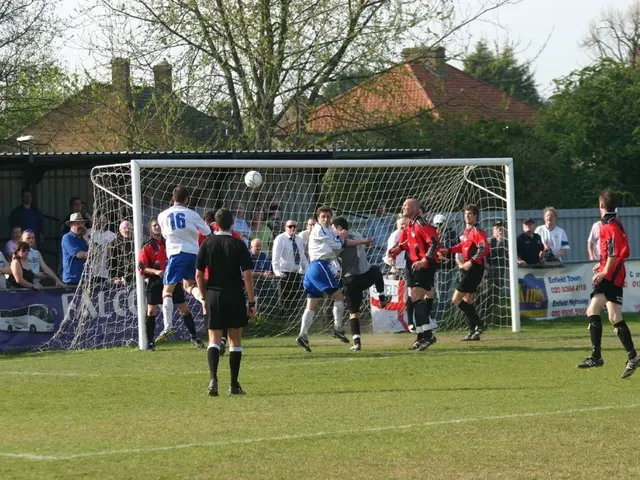Urgent Action Needed: Addressing Concussion Risks in Football
The Modern Epidemic of Concussions Among Youth Athletes
Concussions and related traumatic brain injuries (TBIs) have gradually become a significant issue in the United States. Over the past decade, the number of reported concussions has drastically increased among young athletes, particularly those aged 8-19.
In the year 2012 alone, more than 325,000 teenagers received treatment for concussions, equating to almost 40 every hour. This spike in head injuries has led to rising concerns about the long-term implications and the implications for future generations of athletes.
To shed light on this matter, the Centers for Disease Control and Prevention (CDC) launched the HEADS UP initiative in 2003. Over the subsequent decade, an impressive 1.5 million coaches were trained online, and over a million copies of CDC materials were distributed. Despite these efforts, questions still linger.
Concussions: An Overview
Concussions usually occur as a result of a direct blow to the head or an indirect force to the body — both causing temporary damage to the brain's function. The American Association of Neurological Surgeons (AANS) defines a concussion as: "A clinical syndrome characterized by immediate and transient alteration in brain function, including alteration of mental status and level of consciousness, resulting from mechanical force or trauma."
Unfortunately, one in every three concussions happens during practice, while one in five high school athletes suffer a concussion during their season. Remarkably, nine out of ten concussions do not lead to a loss of consciousness.
Many athletes are unaware that recovering from a concussion can take several weeks and that a second concussion within this period can escalate the risk of permanent damage up to 39%.
Football: The Highest-Risk Sport
Concussions happen more frequently in football than in any other sport. Roughly 47% of all sports-related concussions occur during high school football activities. In terms of incidence, the numbers are approximately 64-76.8 per 100,000 participants in football, compared to 54 per 100,000 in boys' ice hockey. Girls playing soccer are the most at risk, with approximately 33 cases per 100,000. The rate for cheerleaders falls between 11.5 and 14 per 100,000.
The sheer number of athletes participating in these sports raises concerns about the lasting impact on overall health and cognitive functioning. Research indicates that youth athletes who experience multiple concussions during their sporting careers may suffer long-term effects such as memory problems, mood disorders, and even an increased risk of suicide.
Identifying Signs and Symptoms

Football coaches should watch for the following signs and symptoms when evaluating a player suspected of having a concussion:
- Headache or pressure
- Nausea and vomiting
- Balance problems and dizziness
- Blurred or double vision
- Sensitivity to light or noise
- Problems with concentration or memory
- Confusion
- Difficulty staying awake or feeling sluggish
- Mood changes or personality shifts
Other potential red flags for parents and teammates to be aware of include:
- Dazed and stunned appearance
- Forgetfulness about instructions
- Trouble remembering the game, score, or opponent
- Clumsiness in movement
- Being slow to answer questions
- A brief loss of consciousness
- Changes in behavior or mood
- Difficulty remembering what happened before or after the collision or fall
If a coach or parent suspects a concussion, they should follow the CDC's guidelines and remove the athlete from play, keep them out for the rest of the day, and seek clearance from a healthcare professional before the athlete returns to action. However, due to a lack of awareness about the nature and severity of concussions, many players are rushed back onto the field before they have fully recovered.
The Fight for Safer Sports
Since 2009, "Return-to-Play" laws have been introduced across the United States to provide young athletes with adequate time to recover and minimize the risk of further injury. These laws have started to make a difference, like the Zackery Lystedt Law in Washington, which resulted from the tragic story of a 13-year-old footballer who suffered prolonged complications from a concussion.
However, some experts, including Dr. Paul Auerbach, of the Department of Emergency Medicine at Stanford University School of Medicine, argue that these laws do not go far enough. Dr. Auerbach suggests more radical changes, such as:
- Outlawing head-to-head contact in all sports
- Introducing penalties for intentional head blows
- Limiting full-contact practice sessions to just two days per week
- Implementing a mandatory recovery period of at least four weeks before a player can return to full play
Despite pushback from various stakeholders, Dr. Auerbach maintains that these changes are necessary to protect the health and wellbeing of young athletes, ultimately ensuring a safer and more sustainable future for sports.
- The medical-conditions and health-and-wellness of young athletes are under threat due to an increase in chronic diseases, such as concussions and related traumatic brain injuries (TBIs), which are often caused by accidental falls or impacts during sports like football.
- While initiatives like the Centers for Disease Control and Prevention's (CDC) HEADS UP program strive to educate coaches and provide resources, the rising number of concussions in sports-related activities necessitates further scientific research to understand the long-term implications and develop preventive measures.
- To address the growing concern and provide a safer environment for athletes, there are ongoing discussions about implementing stricter rules and regulations in sports like football, such as limiting full-contact practices, outlawing head-to-head contact, and introducing penalties for intentional head blows. These changes aim to minimize the occurrence of concussions and promote health and wellness among young athletes.









